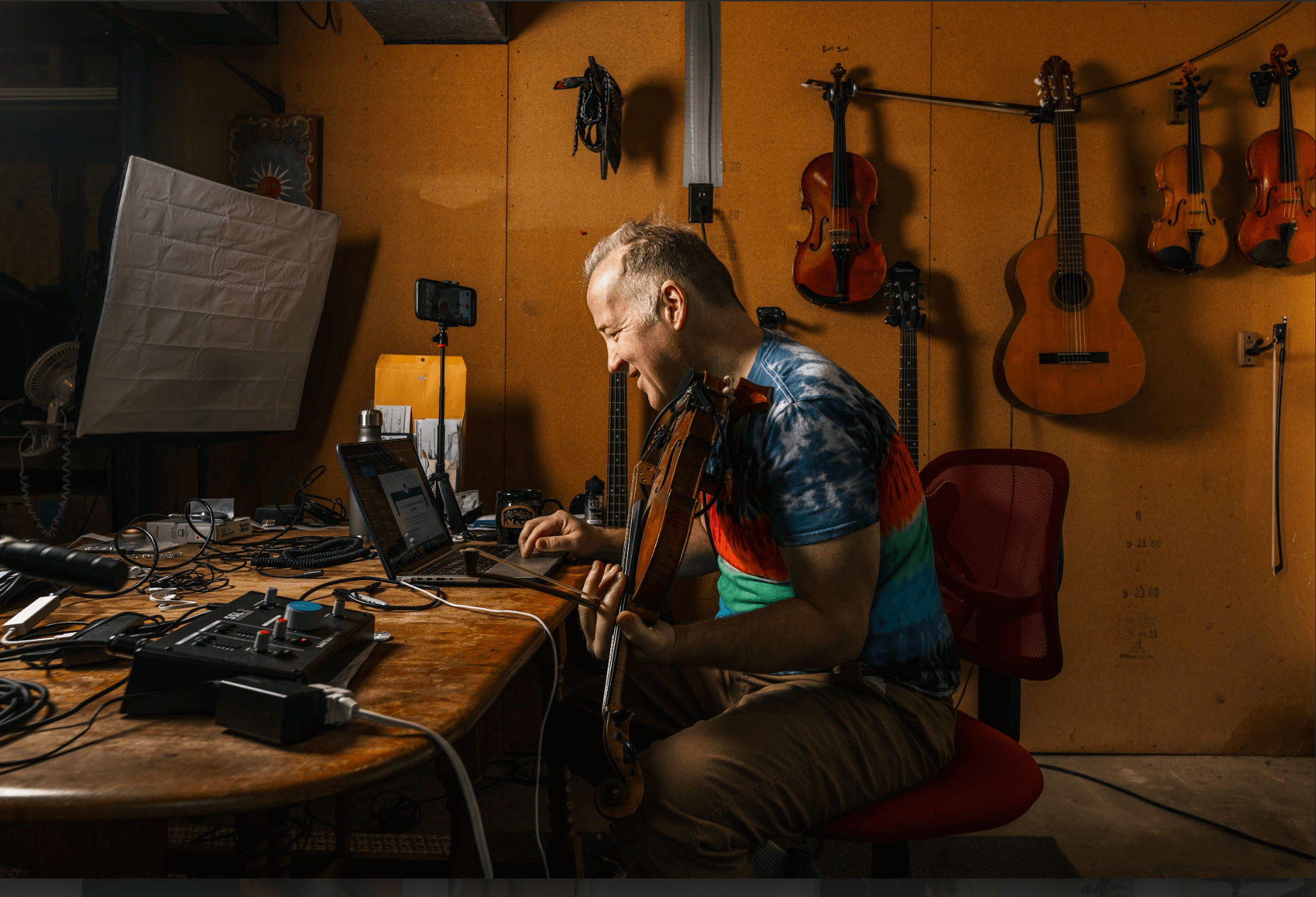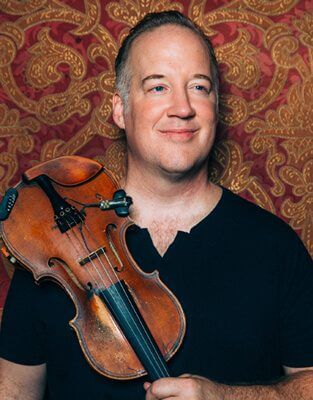String teachers often ask me these two related questions,
Table of Contents
“How can I make violin teaching more interesting for myself?”
“How can I teach violin creatively, helping students to learn harmony, arranging, and improvisation?”
The simplest answer to the question for me is this:
Make music with your students.
Specifically, accompany your violin students. Whether you compose your own accompaniments or you improvise those accompaniments, this will accomplish many important things:
- You’ll be challenging yourself to create and play
- They’ll see you modeling these accompaniments and they’ll develop a natural curiosity to do these things
- You will both be more engaged and have fun
This 2 minute video shows a few examples of how to teach violin creatively using accompaniment
The biggest obstacle for most violin teachers to create their own accompaniments has to do with not knowing the chords to songs.
Once you learn the chords to songs as well as a few simple ways to express bass lines, inner voice patterns, in different styles, it will be easy for you to compose or improvise your own violin accompaniments.
Here are things you can do when you accompany:
- anything percussive including stomping, clapping, vocal sounds, beatboxing, or percussive sounds on violin
- obligato
- bass line
- strumming, pizz, legato
- bass lines
- inner voices
My course on Easy Tonal improvisatipn lays out these steps in a very clear way. To explore it, get the course by itself, or stream it along other courses by taking a trial here.
Young students may not be ready for harmony and music theory.
Until they’re 12, it’s fine for you to model harmonizing and accompaniment, without teaching them theory. This way they will feel it’s normal and they will naturally listen for ways to do it. Once they’re older you can introduce ideas in a more theoretical way.
Meanwhile, it is important for me to inspire kids to feel that it’s safe, fun, and normal to be creative. So I like to tell teachers and parents to make sure they engage in a playful way.
This video shows an example of having fun with the music to Lully Gavotte without instruments (no theory needed!).
Here is another game for Suzuki violin teachers to try on Gossec Gavotte
Whether you are a Suzuki violin teacher or you teach in an orchestra classroom, fiddle styles, or other traditional violin teaching methods, you can inspire students to have a lifetime participation in music using these main ideas:
- Engage in music making with them
- Be willing to go to their level in the spirit of play and discovery
- Challenge yourself and grow by arranging your own accompaniments
If you would like help to teach violin creatively, receive a free private lesson/consult when you take a trial of Creative Strings Academy.
Also consider our weekly guided practice sessions for string teachers and students.
To have me work with your orchestra class, or explore options how we can best help you, schedule a call.






